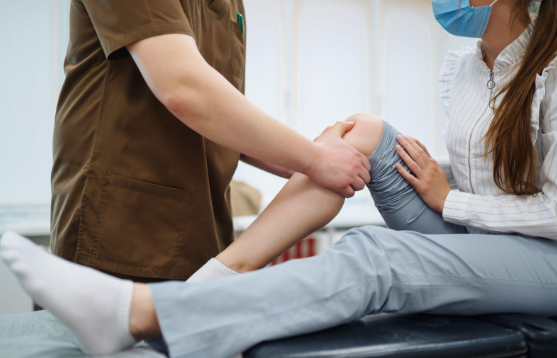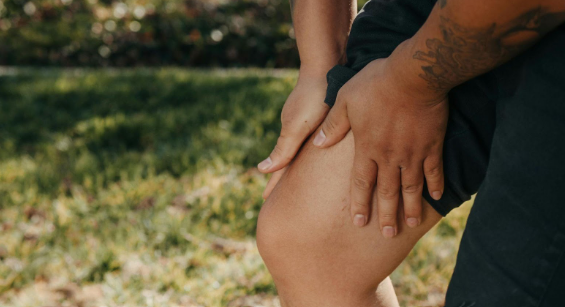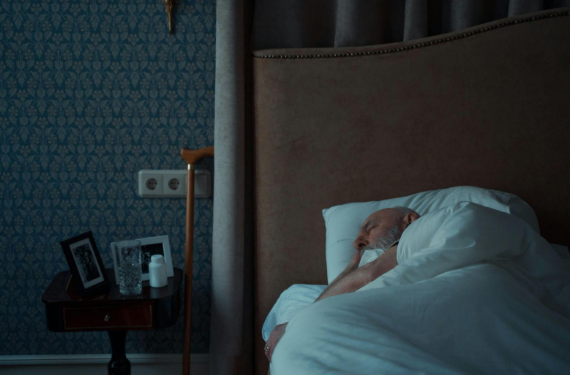What Is Lumbar Radiculopathy?

Have you ever experienced shooting pain in your lower back or legs that seems to come out of nowhere? If so, you may be suffering from lumbar radiculopathy. This common condition affects many people and can cause a range of symptoms, from mild discomfort to severe pain and immobility.
In this article, we'll explore what lumbar radiculopathy is, what causes it, and how you can manage your symptoms to regain your mobility and improve your quality of life.
What Is Lumbar Radiculopathy?
Lumbar radiculopathy, also known as sciatica or neurogenic sciatica, is a condition that results from compression or irritation of one or more of the nerve roots in the lower back. These nerve roots exit the spine and travel down the legs, and when they become irritated or compressed, they can cause pain, numbness, tingling, and weakness in the lower back, buttocks, and legs. It is a common condition, affecting millions of people worldwide, and can significantly impact a person's quality of life if left untreated.
What Are the Causes of Lumbar Radiculopathy?
Lumbar radiculopathy is typically caused by compression or irritation of the nerve roots in the lower back, although the underlying causes can vary. Some of the most common causes of lumbar radiculopathy include the following:
- Herniated disc: A herniated disc occurs when the soft center of the spinal disc bulges or ruptures, putting pressure on the nearby nerve roots.
- Spinal stenosis: Spinal stenosis is a narrowing of the spinal canal, which can put pressure on the spinal cord and nerve roots.
- Degenerative disc disease: This condition occurs when the discs between the vertebrae in the spine begin to deteriorate, causing them to lose their cushioning ability and putting pressure on the nerve roots.
- Spondylolisthesis: Spondylolisthesis is a condition where one vertebra in the spine slips out of place, putting pressure on the nearby nerve roots.
- Trauma or injury: Trauma or injury to the lower back can cause lumbar radiculopathy, especially if it results in a herniated disc or other spinal damage.
- Tumors or infections: Rarely, tumors or infections can cause compression or irritation of the nerve roots in the lower back, leading to lumbar radiculopathy.
It's important to note that lumbar radiculopathy can also be caused by lifestyle factors such as poor posture, lack of exercise, or obesity, which can put excess strain on the lower back and contribute to the development of the condition.
What Are the Symptoms of Lumbar Radiculopathy?
Lumbar radiculopathy can cause a range of symptoms, which can vary depending on the location and severity of the nerve root compression or irritation. Some of the most common symptoms of lumbar radiculopathy include (but are not limited to) pain, numbness or tingling, weakness, loss of reflexes, or difficulty with bowel or bladder function in rare cases.
It's important to note that the symptoms of lumbar radiculopathy can come and go, and may be aggravated by certain activities or positions, such as sitting or standing for long periods of time. If you're experiencing any of these symptoms, it's important to see a doctor for a proper diagnosis and treatment.
What Are the Treatments for Lumbar Radiculopathy?
Lumbar radiculopathy can cause significant pain and discomfort in the lower back, and it's important to seek treatment in order to manage the symptoms and prevent further damage.
There are many different treatment options available for lumbar radiculopathy; read on for a few of the more common treatments:
Physical Therapy
Physical therapy is a common treatment for lumbar radiculopathy, as it can help to reduce pain and improve mobility in the affected area. Physical therapy for lumbar radiculopathy may involve a variety of techniques, including:
- Exercises: Specific exercises may be prescribed to help stretch and strengthen the muscles in the lower back and legs. These exercises can help to improve range of motion, reduce pain, and improve overall function.
- Manual therapy: This technique involves hands-on manipulation of the muscles and joints in the affected area. This can help to reduce pain and improve flexibility.
- Modalities: Various modalities such as ice, heat, ultrasound, and electrical stimulation may be used to help reduce inflammation and pain.
- Education: Education on proper body mechanics, postures, and ergonomics is an important component of physical therapy.
The goal of physical therapy is to help improve function and reduce pain in the affected area, which can improve the quality of life of people with lumbar radiculopathy. A physical therapist will work with the patient to develop an individualized treatment plan that takes into account their specific needs and goals.
Drug Therapy
Drug therapy is a common treatment for lumbar radiculopathy, which involves the use of medications to relieve pain, reduce inflammation and improve overall function. The medications used in drug therapy can be prescription or over-the-counter (OTC) and can include the following:
- Non-steroidal anti-inflammatory drugs (NSAIDs): These medications, such as ibuprofen and naproxen, can help to reduce inflammation and relieve pain.
- Muscle relaxants: These medications can help to reduce muscle spasms and improve mobility in the affected area.
- Opioids: In severe cases, opioids may be prescribed for short-term pain relief. However, due to the risk of addiction and other side effects, opioids are generally not the first line of treatment.
- Antidepressants: Some antidepressant medications, such as tricyclic antidepressants and duloxetine, can help to relieve chronic pain.
- Anti-seizure medications: Medications such as gabapentin and pregabalin can help to relieve nerve pain associated with lumbar radiculopathy.
It's important to note that while drug therapy can be effective in relieving pain and inflammation, it may not be a long-term solution.
Injection-Based Treatment
Injection-based treatments are often used to treat lumbar radiculopathy when conservative measures such as physical therapy and medication do not provide adequate relief. The injections may contain anti-inflammatory medications, such as corticosteroids, which are injected directly into the affected area to help reduce inflammation and pain. Other types of injections may be used to help block the pain signals from the affected nerve.
Living with lumbar radiculopathy can be challenging, but it doesn't have to be. At
Pain Treatment Centers of America, we specialize in treating chronic pain conditions like lumbar radiculopathy. Our team of experienced physicians and pain management specialists is committed to helping you find relief from your pain and reclaim your life. Contact us at
(844) 215-0731 today to learn more about how we can help you overcome lumbar radiculopathy and achieve optimal health and wellness.













